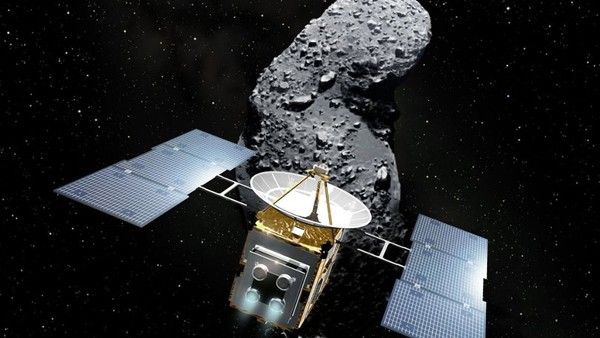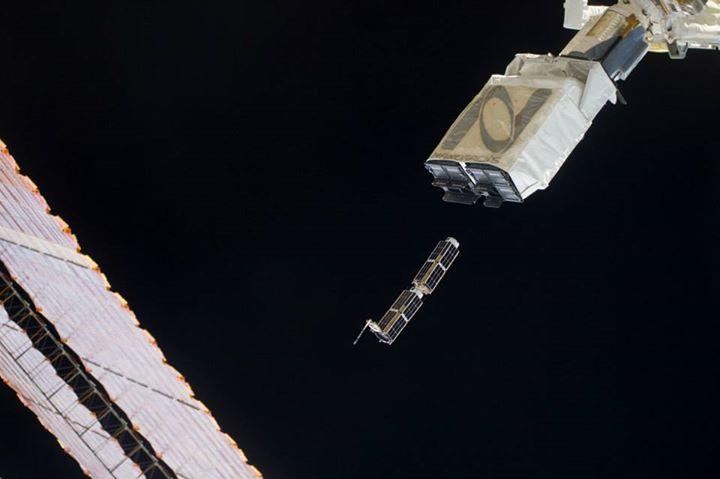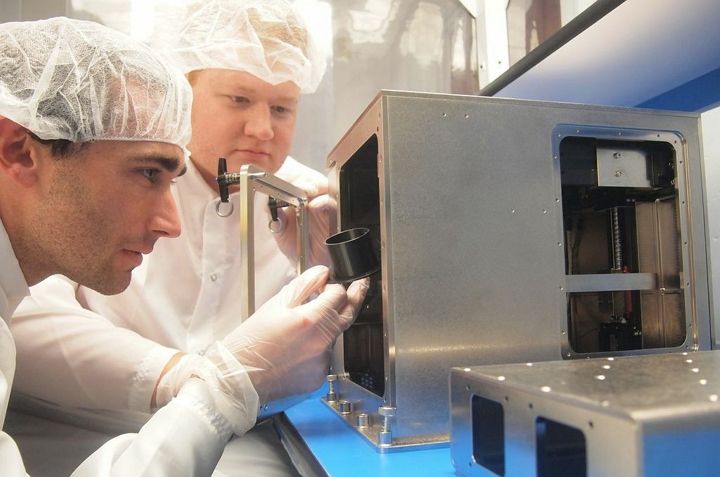“Unlike other vertical farms that use market-ready technology, Romano developed Infinite Harvest’s proprietary building management system from the ground up, using his knowledge of space habitat design.


“Unlike other vertical farms that use market-ready technology, Romano developed Infinite Harvest’s proprietary building management system from the ground up, using his knowledge of space habitat design.


A few years ago, my friend and I were brainstorming on some NextGen Technologies to look at for investment purposes. And, he suggested Polymer Coating. And, was he ever right. Google and others are using it for screen imaging on Lens, etc. Love this stuff.
Researchers at the National Institute of Standards and Technology (NIST) have combined advanced nanometer-scale gratings and a Space Age-era thin-film polymer, to invent a novel technology. This technology can be used to fabricate routers and switches for optical signals, energy-efficient full-color video displays, and smart windows and coatings.
Welcome to the future, folks.
There is more mineral wealth just floating around our solar system than a million times the amount Earth EVER contained. As these asteroids are mined, tunnels will be built, forming the basis for a space station and/or colony. This fact more than doubling the usefulness of the entire operation, AND it’s return on investment. I think THIS is going to be the way in which we’ll begin to colonize our Solar System. Also, a lot of the hazardous (to the environment, human beings, and/or both) that are an inevitable byproduct of heavy industry on our planet could be exported to stations like these, tripling the value of the entire operation.
Today, the Luxembourg Government announced that they are taking steps to become Europe’s hub for mining space resources.
The small European country plans to establish the necessary legal and regulatory framework and invest in related research and development projects. They’re even considering investing in already-established asteroid mining companies like the U.S. based Deep Space Industries and Planetary Resources.
This announcement comes shortly after the United States took a huge step forward in making commercial space mining legal. President Obama signed the U.S. Commercial Space Launch Competitiveness Act (CSLCA) in November, which stated that U.S. companies are entitled to maintain property rights of resources they’ve obtained from outer space.
http://www.transcendencemovie.com/
Dr. Will Caster: “For 130,000 years, our capacity for reason has remained unchanged. The combined intellect of the neuroscientists, engineers, mathematicians and hackers in this auditorium pales in comparison to even the most basic AI. Once online, a sentient machine will quickly overcome the limits of biology. And in a short time, its analytical power will be greater than the collective intelligence of every person born in the history of the world. So now imagine such an entity with the full range of human emotion. Even self-awareness. Some scientists refer to this as ‘the Singularity’. I call it ’Transcendence’. The path to building such a super-intelligence requires us to unlock the most fundamental secrets of the universe. What is the nature of consciousness? Is there a soul? And if so, where does it reside?”
Luddite: “Dr. Caster.”
Dr. Will Caster: “Yes, sir? You have a question?”
Luddite: “So you want to create a God? Your own God?”
Dr. Will Caster: “That’s a very good question. Um… Isn’t that what man has always done?”

The San Jose Mercury News took a look at SRI’s collaboration with Yamaha to develop Motobot, the first motorcycle-riding humanoid robot. “Consider it a high-tech diagnostic tool for motorcycles that just happens to look like a cyborg.”
It sounds fairly alarming — but a scientist claims that our galaxy may not just be in the process of dying, but already be dead. Kevin Schawinski of the Swiss Federal Institute of Technology, Zurich, explains that galaxies ‘die’ when they stop forming new stars from gas. ‘This may sound scenic, but refers to the population between the blue star-forming galaxies (the ‘blue cloud’) and the red, passively evolving galaxies (the ‘red sequence’).

The hunt is on! NASA has begun a quest to select its next big instrument to study the cosmos.
Observatories such as the Hubble Space Telescope have revolutionized humanity’s view of the cosmos. And upcoming projects, such as the James Webb Space Telescope (JWST) and the WFIRST-AFTA mission — which the agency aims to launch in 2018 and the mid-2020s, respectively — promise to make big discoveries of their own.
But what will happen after that? What kind of space telescope does NASA aim to build a few decades from now? The picture is getting a little clearer: Earlier this month, the space agency announced that it is forming four working groups to investigate possible concepts for a large-scale space mission that would likely launch in the 2030s. [The Most Amazing Views of the Cosmos from Hubble].

The year is 2021. You’re driving down the highway on your daily commute. You approach a car that’s stubbornly driving at the max speed limit. You decide to pass this overly law-abiding driver, except when you do, you discover there’s no one in the front seat.
As we learned in the first part of our Future of Transportation series, self-driving cars will become publicly available in only a few short years. But due to their component parts, they will likely be far too expensive for the average consumer. Does this mark self-driving cars as an innovation that’s dead in the water? Who’s going to buy these things?
Most articles about autonomous vehicles (AVs) fail to mention that the initial target market for these vehicles won’t be the average consumer—it will be big business. Specifically, taxi and car sharing services. Why? Let’s look at the opportunity self-driving cars represent to one of the biggest taxi/rideshare services on the planet: Uber.


Made In Space and NanoRacks have been making news lately with the announcement of partnerships to change the way objects are imagined and built off the planet, and now the companies have joined forces to provide a novel new service for CubeSat developers.
 They call it “Stash & Deploy,” and the service will leverage the NanoRacks heritage in CubeSat deployment and the capability of Made In Space to provide 3D printing capabilities and deliver – on-demand – satellite manufacturing, assembly, and deployment in the space environment.
They call it “Stash & Deploy,” and the service will leverage the NanoRacks heritage in CubeSat deployment and the capability of Made In Space to provide 3D printing capabilities and deliver – on-demand – satellite manufacturing, assembly, and deployment in the space environment.
The plan calls for a variety of standard and customer-specific satellite components to be “cached” within a satellite deployment vehicle such as the International Space Station, and the components will be “stashed” for rapid manufacture of CubeSats.